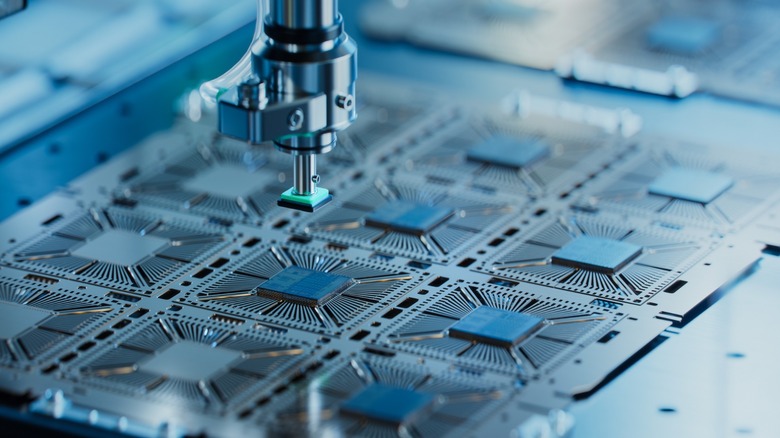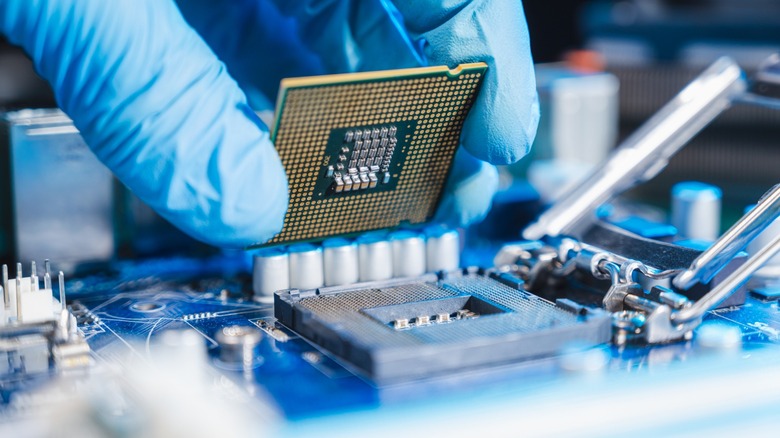The Explosive Science Behind How Computer Chips Are Made
The days of computer chips being mere pieces of tech are long gone. Now, they are very much weapons. Weapons of innovation, wealth, control, and power. That's why all the superpower nations are obsessed with these semiconductors. The world runs on them. If we have no chips, then we have no phones, no missiles, and no Netflix. Microchips are now chess pieces on the global board.
Many of the world's microchips are produced by America, but a single company in Taiwan, the Taiwan Semiconductor Manufacturing Company (TSMC), produces about 90% of the world's most advanced chips, including Qualcomm's Snapdragon chips. That said, the chip race is not the only thing explosive about these small but mighty semiconductors. The science behind it is just as fierce and intriguing.
Imagine if someone told you the central piece to the function of your phone, laptop, and car is made from beach sand. They would be correct. Computer chips owe their origin to beach sand. But this isn't just any sandcastle story. This origin entails everything from the sand to silicon and the splashes of genius behind them.
The science behind computer chip production
The journey of a chip starts with ordinary quartz-rich sand that contains silicon dioxide. It's heated and refined into pure silicon. Then, it is molded into discs called wafers. Once cut and polished, these wafers form the base of all the precision and science that goes into making them chips. This is also where chip fabrication begins, a process done in a sterile place known as a clean room. This is a room with cleaner air than a hospital operating room.
After fabrication, the next stage of the process is the use of extreme ultraviolet lithography. This is also known as EUV, a process that's central to creating small and powerful chips. The only company in the world that can build the machine that makes this process possible is a Dutch company called ASML. The machine uses tin droplets fired 50,000 times per second. Each droplet gets hit by two powerful lasers, with the first one flattening the droplet like a pancake and the second vaporizing it into a plasma hotter than the sun.
That plasma emits EUV light, which is then bounced through mirrors and aimed at the wafer. When it hits, it prints circuit patterns that put life into the chip. Then boom, it gets snapped up and used as iPhone processors, NVIDIA's new flagship graphics cards, and so on.

